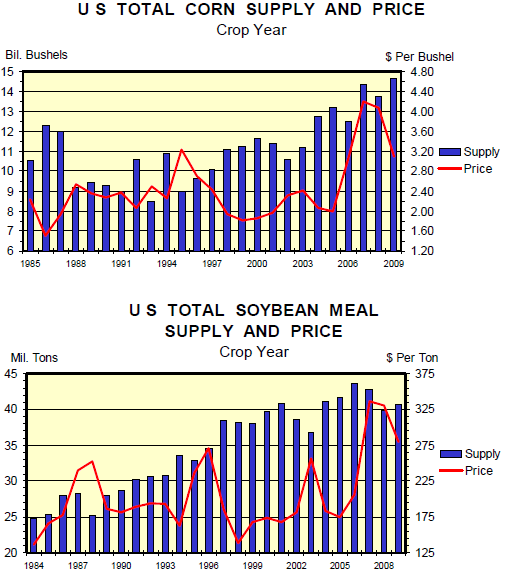



CME: Corn, Soybean Crops Short on Maturity
US - When you touch the spark of a frost warning (even if it for 10 days out!) to the powder keg that is this year's immature corn and soybean crops, you get at least a small explosion, write Len Steiner and Steve Meyer.That was apparently what happened today as talk about frost ignited rallies of 24-30 cent/bushel in CME Group Corn futures and 38- 51 cents/bushel in CME Group Soybean futures. The soybean rally, of course also pulled soybean meal up $15-$20/ton and soybean oil up by over 1 cent per pound.
We have pointed out many times that, while obviously in great condition, these crops are far short on maturity. A frost at this point would cause kernel and bean sizes to be small and hurt their density, impacting test weights and thus yields. Soybean plants are now shedding leaves in much of the upper cornbelt in response to shorter days. Corn plants in Iowa are browning quickly but both crops could use another 2-3 weeks. In addition to seed maturity, that time would result in significant dry-down, reducing crop farmers’ propane costs.
The two charts below show the historical relationships between total corn and soybean supplies and their prices. Note that the 11 September World Agricultural Supply and Demand Estimates (WASDE), released last Friday forecast the largest amount of available corn EVER for the 2009-2010 crop year even though the projected crop is the second largest ever. The difference, of course, is that 2008-09 carryout stocks are significantly larger than were those of 2006-07. The projected drop in corn prices (18 per cent) this year is quite dramatic given that the increase in total corn supply amounts to only 6.7 per cent versus last year. The reason appears to be softer corn demand due to lower oil and gasoline prices. When total corn supply established its last record in 2007- 08, corn prices ROSE due to high oil and gasoline prices and the boom in ethanol plant construction.

Higher (2.1 per cent) total soybean meal availability will also be accompanied by a sharp decline (15.2 per cent) in soybean meal prices according to USDA’s WASDE estimates. That price decline, of course, is compared to record and near-record prices the past two years and a range of $250 to $310 per ton hardly represents a bargain for animal protein producers.








